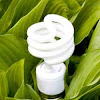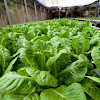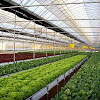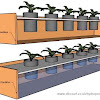 CFL light bulbs are very economical and reliable. When you turn on the light switch, an electric current passes through a mixture of argon and little bit of mercury gas. This gas produces an ultraviolet light that ignites the phosphorus covering on the inside of the bulb. This is turn causes the bulb to be illuminated.
CFL light bulbs are very economical and reliable. When you turn on the light switch, an electric current passes through a mixture of argon and little bit of mercury gas. This gas produces an ultraviolet light that ignites the phosphorus covering on the inside of the bulb. This is turn causes the bulb to be illuminated.
As it may be apparent now, CFL light bulbs are ideal for growing hydroponic foods since they provide the appropriate amount of light for rapid plant development. If you decide to grow plants using the hydroponic method, you can set up you indoor garden in an area where you can take good care of the plants. Additionally, if you opt to grow food in your kitchen, CFL lights bulbs are very beneficial in supply the right amount of light needed for development of plants, fruits, and vegetables.
Plants that are grown in an outdoor garden may are exposed to various risks such as inclement weather, pesticides, and animal attacks. By developing an indoor garden, all these risks are eliminated, and you can grow more healthy and strong plants. CFL lights bulbs will appropriately supply the right amount of light that is required for indoor plant cultivation. What’s more, full spectrum CFL light bulbs will make it appear as if the plants are constantly receiving sunlight, even if they are cultivated in a basement that has no window!
Full spectrum CFL light bulbs produce about 6500 kilowatts of electricity. It is also guaranteed that this amount is ample to help with rapid plant growth. The technology used in producing CFL light bulbs resembles sunlight, and these bulbs are therefore extremely useful in growing plants wherever they are sown. Besides, CFL light bulbs emit very little heat, and so your plants remain well protected from any possible harm or damage.
If you opt to grow plant through the hydroponics process, you may purchase a kit that also comprises of CFL light bulbs. You will in the lit, a user manual that will state all the necessary information on how to correctly use CFL light bulbs.
Hydroponic has acquired immense popularity, given the fact that people can so easily indulge in hobbies such and plant cultivation and gardening. Through hydroponics, one can conveniently make use of all the necessary tools that are required for growing plants and food indoors. Additionally, CFL light bulbs coming in handy not just for growing food, but they have proved to be excellent gardening tools as well. They may be used to cultivate plants and flowers indoors that will create a very beautiful ambiance inside your home.










 One can safely say that the
One can safely say that the 




